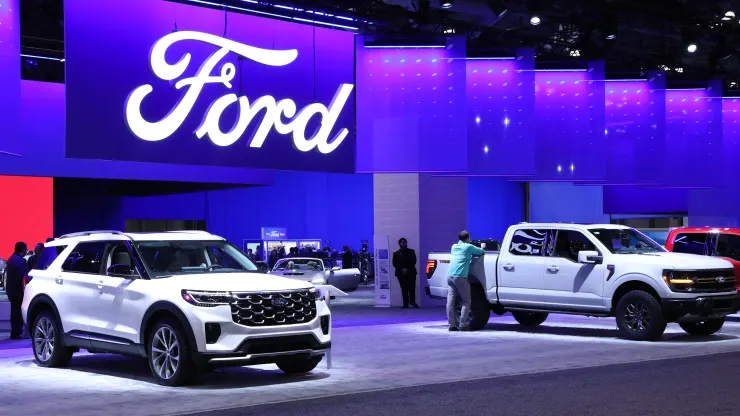DETROIT — Ford Motor came in short of Wall Street’s second-quarter earnings expectations while beating on revenue, due to warranty costs that have plagued the automaker for several years now.
The automaker increased its full-year target for free cash flow but maintained its 2024 earnings guidance, disappointing some investors who had hoped for a hike. Ford’s guidance for the year includes adjusted earnings before interest and taxes, or EBIT, of between $10 billion and $12 billion.
Shares of the automaker were down about 11% after markets closed. The stock closed Wednesday at $13.67 per share.
Here is how the company did, compared to estimates from analysts polled by LSEG:
Earnings per share: 47 cents adjusted vs. 68 cents expected
Automotive revenue: $44.81 billion vs. $44.02 billion expected
The Detroit automaker said its profitability was affected by increases in its warranty reserves used to pay for vehicle issues. The costs are related to vehicles for the 2021 model year or older, Ford Chief Financial Officer John Lawler said during a media briefing.
Ford said recent initiatives to improve quality and vehicle launches are paying off and are expected to help bring down future warranty costs.
“We’re making real progress in raising quality, lowering costs and reducing complexity across our entire enterprise,” Lawler said during a media briefing. “We’re making real progress on quality that will benefit us down the road.”
Lawler declined to disclose Ford’s total warranty cost for the second quarter but said it was $800 million more than the previous quarter.
Net income for the second quarter was $1.83 billion, or 46 cents per share, compared to $1.92 billion, or 47 cents per share, a year earlier. Adjusted EBIT declined 27% year over year to $2.76 billion, or 47 cents per share, compared to $3.79 billion, or 72 cents per share, during the second quarter of 2023.
Ford’s overall revenue for the second quarter, including its finance business, increased about 6% year over year to $47.81 billion.
Ford CEO Jim Farley told investors Wednesday that his Ford+ restructuring plan remains on track to make the automaker more profitable.
“We are absolutely a different company than we were three years ago,” Farley said during the company’s earnings call, noting the “remaking of Ford is not without growing pains.”
Ford’s traditional business operations, known as Ford Blue, earned $1.17 billion during the second quarter, while its Ford Pro commercial business earned $2.56 billion. Its “Model e” electric vehicle unit lost $1.14 billion from April through June.
The Ford+ plan initially focused heavily on EVs when it was announced in May 2021 during the company’s first investor day under Farley, who took over the helm of the automaker in October 2020. It has since shifted to focus more on customer choice and next-generation EVs to drive profits.
Farley said Ford’s “more realistic and sharpened” EV plan, including focusing on a small next-generation EV platform, will prove worthwhile for the company in the years ahead.
As of Wednesday’s close, Ford’s stock was up more than 10% this year, as pricing in the automotive industry has remained more resilient than expected, but some Wall Street analysts believe automaker profits may have peaked.
“We don’t see the second half being much different than the first half, or falling off,” Lawler said. “There’s going to be puts and takes in any half of the year … that was part of our guidance, and we’re planning on managing that.”
There was pressure on Ford to raise its guidance after crosstown rival General Motors raised its yearly guidance Tuesday for the second time this year.
GM’s second-quarter results also beat Wall Street’s top- and bottom-line expectations, but the automaker’s stock on Tuesday declined 6.4%.

